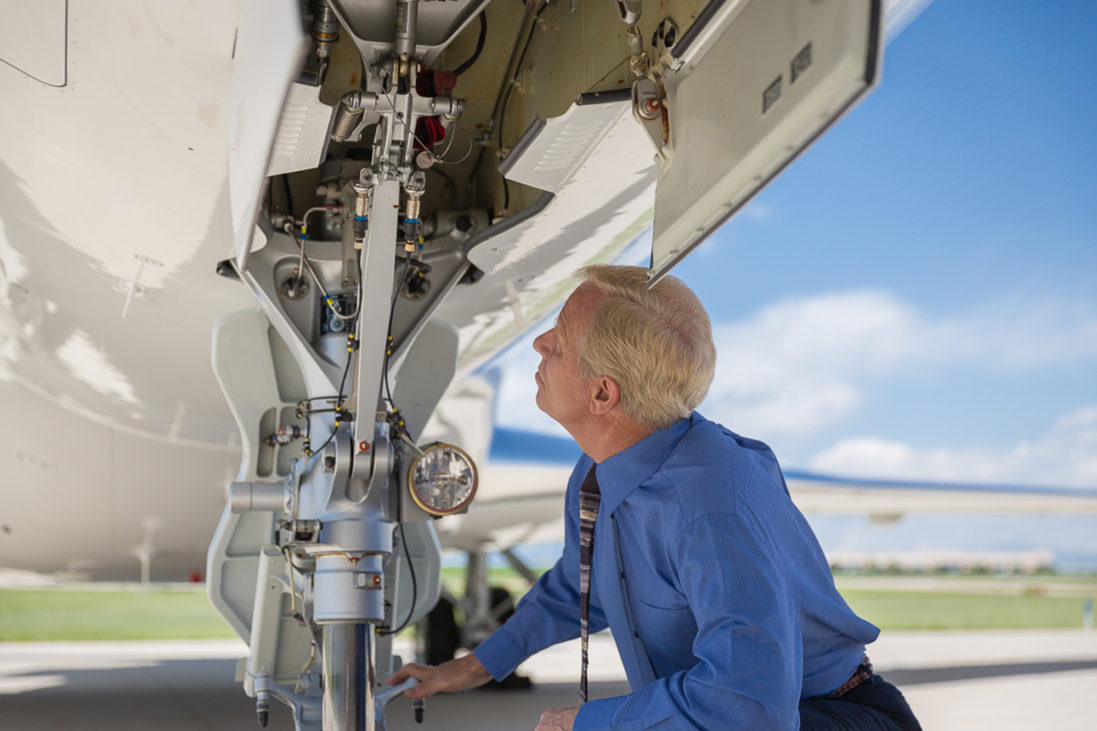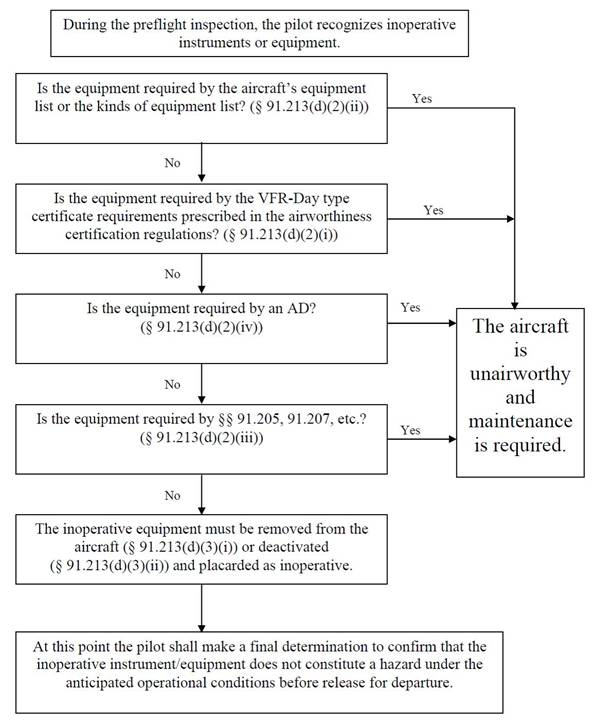
14 CFR §91.213(d) allows certain part 91 operators to fly an aircraft with inoperative instruments or equipment even though the Federal Aviation Regulations generally require that all equipment installed on the aircraft be operative at the time of flight.
Some operators of aircraft, based on the kind of operation or size and type of aircraft are required to have a Minimum Equipment List (MEL) in order to operate the aircraft with inoperative instruments or equipment. However, operators of the following types of aircraft may operate under part 91 without an MEL.
- Nonturbine-powered small airplanes (12,500 pounds or less maximum certificated takeoff weight) for which a Master Minimum Equipment List (MMEL) has been developed.
- Nonturbine-powered airplanes for which an MMEL has not been developed.
- Small rotorcraft (12,500 pounds or less maximum certificated takeoff weight) for which an MMEL has been developed.
- Rotorcraft for which an MMEL has not been developed.
- Gliders.
- Lighter-than-air aircraft.
The inoperative instruments and equipment can not be:
- part of the VFR-day type certification instruments and equipment prescribed in the airworthiness regulations under which the aircraft was type certificated
- indicated as required on the aircraft’s equipment list
- indicated as required on the aircraft’s Kinds of Operations Equipment List for the kind of flight operation being conducted
- required by 14 CFR §91.205 or any other rule of 14 CFR part 91 for the specific kind of flight operation being conducted
- required to be operational by an airworthiness directive
The inoperative instruments and equipment must be removed from the aircraft, the cockpit control placarded, and the maintenance recorded in accordance with 14 CFR §43.9; or deactivated and placarded “Inoperative.” If deactivation of the inoperative instrument or equipment involves maintenance, it must be accomplished and recorded in accordance with 14 CFR part 43.
Finally, a pilot, who is certificated and appropriately rated under 14 CFR part 61, or a person, who is certificated and appropriately rated to perform maintenance on the aircraft, must determine that the inoperative instrument or equipment does not constitute a hazard to the aircraft.
Conducting Operations without an MEL
Operating under 14 CFR §91.213(d) requires no application to or approval from the FAA. The following figure illustrates the sequence of events involved in applying the MEL to inoperative equipment.



 International Business Aviation Council Ltd.
International Business Aviation Council Ltd.